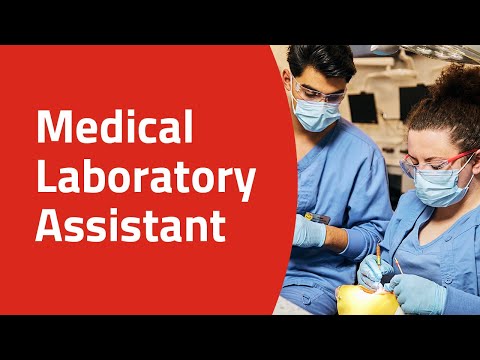Medical Assistant Chapter 3: The Duties of a Medical Assistant
Contents
A medical assistant is a person who has completed an accredited medical assisting program and has passed a certification exam. Medical assistants perform a variety of administrative and clinical tasks to keep the offices of physicians, podiatrists, and other health practitioners running smoothly.
Checkout this video:
Job Description
The vast majority of medical assistants work in outpatient care centers, physician’s offices, or hospitals. Many of these facilities are clinics that treat specific conditions or diseases, such as sports medicine clinics, cardiology practices, or obstetrician/gynecologist offices. Others are generalist facilities that provide a wide array of services for their patients. In either case, the duties of medical assistants are typically divided into five main functions: administrative, clinical, clerical, environmental, and patient relations.
The administrative duties of a medical assistant include acting as a first point of contact with patients, scheduling appointments, verifying insurance coverage, and handling billing and coding. Medical assistants might also be responsible for handling phone calls from patients and pharmaceutical companies, ordering office and medical supplies and maintaining patient medical records
Clinical duties involve taking patient histories and performing basic physical examinations. Medical assistants might also take vitals signs (blood pressure, temperature, heart rate), prepare patients for X-rays and other diagnostic tests, assist physicians during examinations by handing them instruments and collecting specimens (such as urine samples), give injections (under the supervision of a physician), perform EKGs (electrocardiograms), dress wounds, provide postoperative care instructions to patients (such as ice packs for swollen joints), prepare laboratory specimens for testing (such as cultures), remove sutures (stitches) after surgery under the direction of a physician or nurse practitioner , take electrocardiograms (EKGs), perform phlebotomy (drawing blood) , give injections to patients under the direction of a physician or nurse practitioner , answer patient questions about medications.
Clerical duties include answering phones; scheduling appointments; greeting patients; updating and filing Medical records handling correspondence; scanning insurance forms; preparing charts; transcribing dictation; faxing documents; stocking exam rooms; scheduling hospital admissions and procedures; arranging for outpatient testing; coordinating referrals to other physicians or specialists , handling correspondence , stocking exam rooms , preparing charts , transcribing dictation , faxing documents.
Environmental services include keeping the office clean and organized; sterilizing equipment; setting up exam rooms before visits; taking out trash ; preparing hot packs or cold compresses ; cleaning slush machines ; cleaning autoclaves ; moving equipment from one part of the office to another part of the office.
Patient relations involve providing customer service to patients by answering their questions in person or over the phone; providing accurate instructions on following up after procedures ; directing them to the proper recovery area ; providing support and emotional encouragement during difficult treatments or procedures .
Education and Training
Education and Training
Medical assistants must complete a formal education program to be eligible for certification. Most programs last between one and two years and lead to a certificate or diploma. Some community colleges offer associate degree programs in medical assisting, which take two years to complete. A small number of schools also offer four-year bachelor’s degree programs in medical assisting, but these are not as common.
Most medical assistant programs include coursework in anatomy and physiology, Medical Terminology administrative office procedures, and insurance billing and coding. Students also receive training in how to perform clinical tasks such as taking vital signs, administering injections, and performing basic laboratory tests. Many programs include an externship component, which gives students the opportunity to gain real-world experience working in a healthcare setting.
Certification
The certification process for medical assistants varies by state. Some states have no certification requirements, while others require medical assistants to be certified or licensed before they can perform certain tasks, such as taking patient medical histories or performing basic laboratory tests. Many employers prefer to hire certified medical assistants, and some may require certification as a condition of employment.
There are several nationally recognized organizations that offer certification exams for medical assistants. To be eligible to take the exam, candidates must have completed an accredited medical assistant training program or have equivalent work experience. Once certified, medical assistants must recertify every few years to maintain their credential.
Medical assistants who are interested in additional responsibilities and higher pay often pursue further education to become a registered nurse (RN) or licensed practical nurse (LPN). Some states allow RN-educated medical assistants to perform more advanced tasks, such as giving injections or starting intravenous fluids.
Salary and Job Outlook
The Bureau of Labor Statistics (BLS) reports that the median salary for medical assistants was $34,800 in May 2019. The lowest 10 percent earned less than $24,920, while the top 10 percent earned more than $49,380. The BLS also projects that employment of medical assistants will grow much faster than the average for all occupations from 2018 to 2028 — 23 percent compared with 5 percent.
Skills and Qualifications
Skills and Qualifications
A medical assistant must have good communication skills. This is important because the medical assistant will be working with patients who may be in pain, under stress, or confused. The medical assistant must also be able to communicate well with doctors and other members of the healthcare team.
In addition to communication skills, a medical assistant must have:
-good people skills
-detail-oriented
-able to work well under pressure
-basic computer skills
Duties
The duties of a medical assistant are wide-ranging and varied, but can be generally divided into five main categories: clinical duties, administrative duties, front office duties, back office duties, and miscellaneous tasks.
Clinical duties include tasks such as taking patient medical histories, measuring patients’ vital signs (height, weight, blood pressure, etc.),preparing patients for examination, assisting the physician during the exam, collecting and processing lab specimens,performing basic laboratory tests, performing electrocardiograms (EKGs), instructing patients on medication and diet regimens prescribed by the physician, arranging for hospital admissions and laboratory procedures ordered by the physician, scheduling follow-up appointments for the patient, and giving injections when ordered by the physician.
Administrative duties include tasks such as greeting patients and visitors to the office, answering phones and routing calls appropriately, handling correspondence and billing inquiries from patients and insurance companies in a prompt and professional manner, verifying insurance coverage prior to appointments or procedures being performed, filing patient medical records in both a paper and electronic format according to federal regulations (HIPAA), coding diagnoses and procedures for billing purposes according to ICD-9/10 or CPT guidelines.
Front office duties include tasks such as scheduling patient appointments via telephone or in person according to the physician’s availability; checking patients in for their appointments; collecting co-pays or other payments due at the time of service; verifying that the patient’s insurance information is up to date; updating the patient’s demographics information as necessary; maintaining an accurate log of daily appointments; handling incoming & outgoing faxes; ordering office supplies as needed.
Back office duties include tasks such as entering data from patient medical records into an Electronic Health Record (EHR) system according to established guidelines; scanning & indexing documents into the EHR system using established guidelines; retrieving records from off-site storage as needed by authorized personnel; destroying outdated records per established retention schedules & policies; preparing charts forPhysician review prior to patient visits; organizing & stocking exam rooms with necessary supplies & equipment.
Miscellaneous tasks may be assigned as needed by the Physician or Practice Manager and can include but are not limited to: performing Triage Center functions when staffing permits during times of high call volume; filling in at the front desk or back office when additional coverage is needed due to vacations/sick leave/etc.; providingtranslation services for Limited English Proficient (LEP) patients as needed/requested; providing chaperone services during certain types of examinations per established protocols.
Working Conditions
The working conditions of a medical assistant are usually pleasant. Most work in well-lit, clean offices, clinics, and hospitals. Many medical assistants have regular hours, although some may work evenings or weekends to cover the hours that physicians’ offices and clinics are open. Many medical assistants also work part time. Some travel to patients’ homes to provide care or visit nursing homes and other long-term care facilities. Those who work in surgery centers or outpatient diagnostic centers may work evenings or weekends when these facilities are open for procedures. In most cases, medical assistants work under the supervision of a licensed health care provider, such as a physician, nurse, or physician assistant.
Employment Outlook
The medical assistant profession is growing much faster than average. According to the Bureau of Labor Statistics, employment of medical assistants is expected to grow 23 percent from 2019 to 2029, much faster than the average for all occupations. The aging baby-boom population and continued emphasis on preventive medical care and earlier detection of disease will spur demand for medical assistants.
The growing use of teams in health care will also increase demand for medical assistants. As a result of this team-based approach, medical assistants will likely assume expanded roles in patient care, such as working with patients to manage chronic diseases such as diabetes and high blood pressure.
Medical Assistants in the Future
The employment outlook for medical assistants is expected to grow much faster than the average for all occupations through 2024, according to the U.S. Department of Labor. This demand is due to the continued growth in the number of physicians and other health care providers, and an increase in the number of medical assistants that they will need to hire to perform routine administrative and clinical duties.
As baby boomers age, they will need more medical care for age-related conditions such as arthritis, heart disease, diabetes, and cancer. The Affordable Care Act (ACA) is also expected to increase the demand for medical assistants because it has resulted in more people having health insurance and thus using more health care services. In addition, as medical practices move toward employing teams of health care providers, there will be a greater need for medical assistants to help coordinate patient care.
FAQs
Q: What is a medical assistant?
A: A medical assistant is a healthcare professional who performs a variety of tasks in a healthcare setting, such as doctor’s offices, clinics, and hospitals. They may also be responsible for administrative tasks, such as scheduling appointments and managing medical records.
Q: What are the duties of a medical assistant?
A: The duties of a medical assistant can vary depending on the specific job, but they may include taking patients’ vital signs, measuring their height and weight, drawing blood, administering injections, scheduling appointments, and maintaining medical records.
Q: What qualifications are required to be a medical assistant?
A: While there are no specific educational requirements to become a medical assistant, most employers prefer candidates who have completed an accredited medical assisting program. Many states also require medical assistants to be certified by a professional organization, such as the American Association of Medical Assistants (AAMA).







